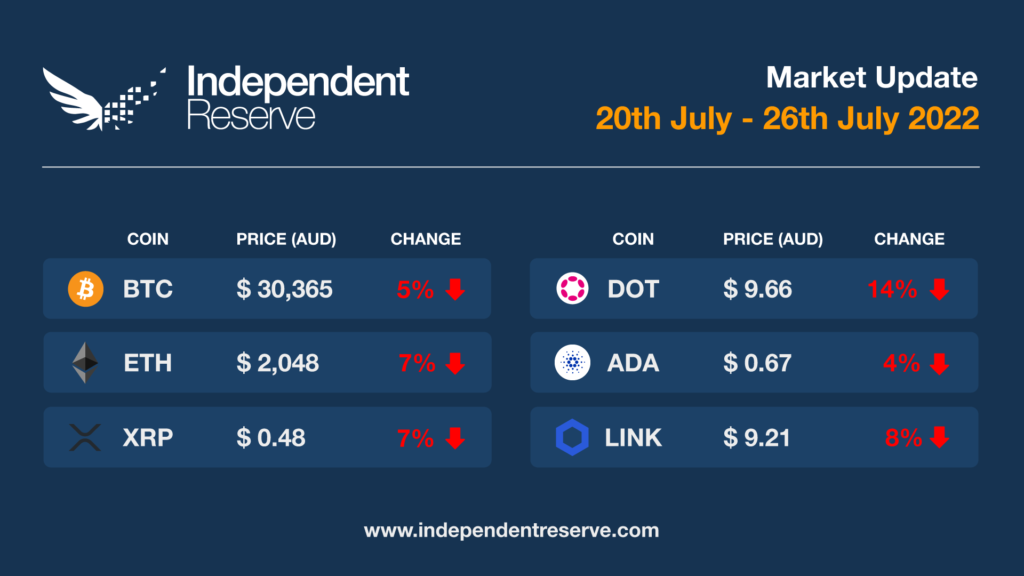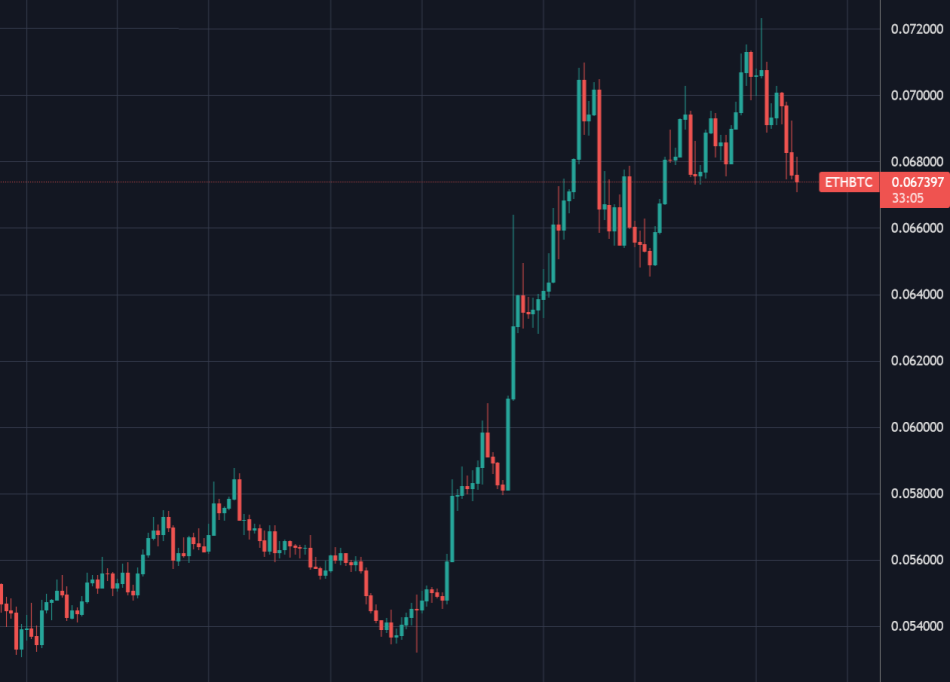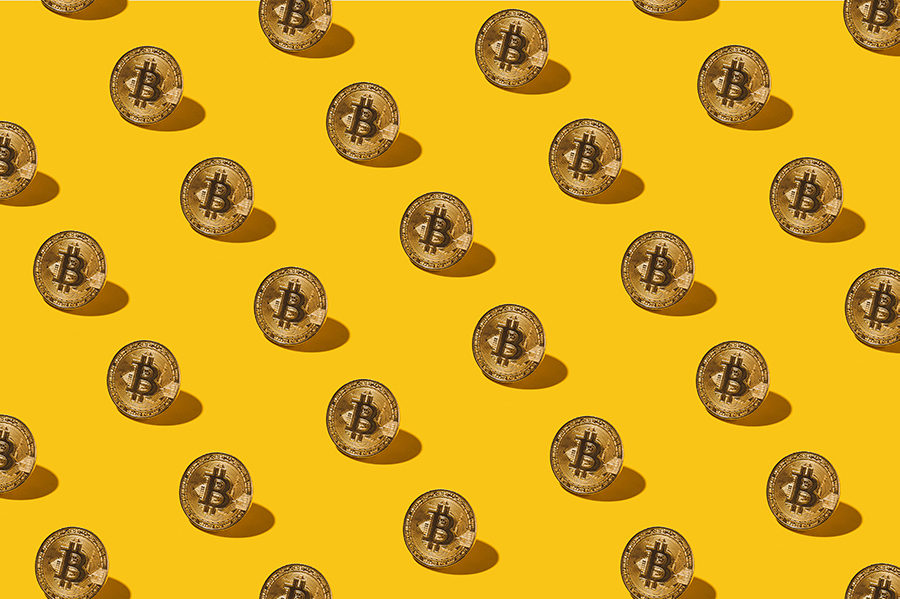In Markets
Brace yourself for a potentially bumpy week with the US Federal Reserve expected to hike interest rates by 75 basis points, and the release of the Q2 US Gross Domestic Product figures potentially showing a recession (two quarters of negative growth). Australia’s inflation rate figures also come out and are expected to be awful, and a bunch of big tech company earnings reports are coming out too. Perhaps in expectation of possible bad news, everything has fallen considerably in the past 24 hours. Bitcoin finished down 6% at over A$30,300 (US$21K), while Ethereum was down 7% to around A$2,120 (US$1.5K). The imminent Vasil hard fork saw Cardano gain a modest 4% while XRP fell 7%, and Dogecoin lost 3.1%. After a record 73 days at Extreme Fear, the Crypto Fear and Greed Index returned to simply Fear this week, and it’s currently at 30 (Fear).

From the IR OTC Desk
For a while now we have been emphasising the importance of the macroeconomic landscape as the core pricing input to risk assets and cryptocurrencies. The economic indicators we continue to monitor closely include: the USD trade weighted index (DXY); the shape of the yield curve; job openings and the strength of the labour market; and headline inflation (including inflation expectations). For Australia, importantly, this includes the AUD/USD.
In the US this week, the Federal Open Market Committee (FOMC) is scheduled to convene for their July meeting, with the Fed Interest Rate Decision to be released at 4am (AEST), Thursday the 28th of July. As per the usual format, the Fed Press Conference held by Chair Powell will begin 30 minutes following (4:30am AEST). Short-term interest rate markets are currently forecasting a 75bp increase to the Fed Funds rate – this would move the target band to 2.25% – 2.50%. Any deviation in the size of the interest rate increase will prove highly volatile for risk assets; as will any change in the projected path of monetary policy or the labour market in the Q&A of the press conference. Additionally, Thursday also delivers the GDP Growth Rate QoQ (Q2), scheduled for release at 10:30pm. With a -1.6% GDP Q1, all eyes will be focused on whether the Q2 growth rate will be able to print positively, and critically, avoid the label of a textbook recession (broadly defined as two consecutive quarters of negative real GDP).
In Australia we receive the Q2 inflation report on Wednesday the 27th of July at 11:30am (AEST). Currently the market is expecting the Inflation Rate YoY (Q2) to print at 6.2%, relative to 5.1% in Q1. With a circa 55bp cash rate increase currently being priced-in for the Reserve Bank of Australia’s (RBA’s) 2nd of August meeting, a significantly higher inflation release might see short term interest rate futures challenge the appropriateness of a 50bp increase. Watch this space. On the currency front, AUD/USD looks to have based in the short term and has trended higher over the week. AUD/USD is now trading at circa 0.6980 at the time of writing – nearly 1c higher than this time last week. With such a positive Australian trade balance, AUD/USD may continue to benefit from a narrowing interest rate differential between Australian and the US.
On the OTC desk, there has been a sharp turnaround in flow direction, with most orders looking to buy. This has occurred not just in BTC and ETH, but also in USDC and USDT. Additionally, there has been a noticeable increase in long tail altcoin pricing requests – perhaps a sign that investor comfort may be returning to lower market cap ventures. ETH/BTC continues to be topical, as we progress towards the merge, retracing slightly on the week to now trade at 0.06740. The DeFi theme of collateralised stable coin projects continues to gain momentum and is certainly an area to take notice.
For any trading needs, please don’t hesitate to get in touch.

ETHBTC chart over the last month
In Headlines
Tesla sells 75% of its Bitcoin
Tesla’s flirtation with the Hardest Money Known To Man helped spark last year’s bull run, but it concluded this week with the company selling off 75% or US$936M (A$1.35B) of its Bitcoin holdings. Elon Musk explained the company was trying to “maximise our cash position, given the uncertainty of the Covid-19 lockdowns in China” but left the door open to “increasing our Bitcoin holdings in the future.” The news didn’t have much impact on the price, and experts don’t think it signifies much other than Tesla needed the cash. Weird accounting rules in the US that require paper losses on crypto holdings to be reported each quarter, but paper gains aren’t counted at all, mean that it doesn’t make a lot of sense for public companies to hold Bitcoin. Tesla recorded a US$170 million (A$245M) impairment charge against its Bitcoin in the quarter.
Big guys dumped a lot of Bitcoin
According to Arcane Research analyst Vetle Lunde, large institutional investors have sold off 236,237 Bitcoin since May 10 worth US$5.1 billion (A$7.4B) at current prices (but a lot more then). That includes 80K Bitcoin by the Luna Foundation Guard, 29K Bitcoin by Tesla, 22K each from 3AC and Celsius and about 20K by public Bitcoin miners. The fact that Bitcoin is holding above A$30K and US$20K after all of that should give investors optimism about its resilience. However, Lunde isn’t predicting an immediate bull run: “I tend to lean in favour of forced selling and contagion-related uncertainty being done for now. We will likely slump, pump, and dump in choppy conditions in the coming period.”

Singapore to broaden crypto regulations scope
The Monetary Authority of Singapore (MAS) held the launch of its annual report on the 19th of July. Managing director Ravi Menon said MAS plan on “broadening the scope of regulations to cover more activities” to align with international regulators. This will possibly include restricting retail investors’ access to digital tokens. Mr Menon commented that the proposed measures MAS is consulting on would focus on consumer protection. He also said it is likely that the number of financial entities that will require a license to operate in Singapore will increase. The outcome is expected by September or October this year.
Securities
The SEC claims nine tokens listed by Coinbase are securities in an insider trading case against an exchange employee. Powerledger (POWR), Kromatika (KROM), DFX Finance (DFX), Amp (AMP), Rally (RLY), Rari Governance Token (RGT), DerivaDAO (DDX), LCX, and XYO are said to be securities according to the SEC. However, another 15 coins involved in the case were not classified as such.
ETH wholecoiners
The number of Ethereum addresses holding one or more coins has just reached an all-time high of 1,560,775, according to Glassnode. While that’s good news, it’s still only about as many addresses as people who live in Adelaide, showing wholecoiners are still very early. On the other hand, many more people own less than that, with 47M addresses currently in profit. The amount of ETH on exchanges is presently at a four-year low of under 20 million.
Merge, surge, verge
Ethereum co-founder Vitalik Buterin talked up the Merge and the “Surge, Verge, Purge, and Splurge” at Ethereum Community Conference in Paris this week. He said the network is just 40% complete at present and will reach 55% complete after the Merge. The good news is that after sharding (the surge) is implemented, the network will be able to do 100,000 transactions per second. Buterin said anyone not excited about the Merge introducing proof of stake can join ETH Classic instead. “It’s not even a joke. If you like proof-of-work, you should go use Ethereum Classic. It’s a totally fine chain,” he said. Separately he’s come up with new scalability proposals to solve efficiency concerns with how memory consumption is limited on the Ethereum Virtual Machine. The current solutions are “needlessly complicated and inefficient, punishing regular users too much and DoS attackers too little”. Hence, he has three potential solutions: “cap memory by gas, cap total memory to 30m separately from gas, or cap memory by the square root of gas.”

Vitalik Buterin is the creator of the Ethereum blockchain. Image: Siam Blockchain
The trouble with crypto tax
Experts are warning of unexpected tax bills this year related to staked coins. The ATO treats any yield from DeFi or interest on staked coins as income at the time it is granted. But if the coin collapses in value – such as Terra – investors still need to pay the tax on the value it was worth at the time, rather than the current value of $0.00000001. In one case, an investor staked $1 million in Terra at a 20 percent return, earning $200,000, but he now hasn’t got enough money to pay the tax. It’s a similar situation with “earnings” on Celsius, which are currently inaccessible. To avoid this, it’s best to sell some earnings as you go so you can afford the tax.
One billion crypto users can’t be wrong
Boston Consulting Group, Bitget, and Foresight Ventures have forecast that the number of crypto users worldwide will hit 1 billion by 2030. There’s a big potential for big gains for savvy early adopters, with just 0.3% of individual wealth invested in crypto compared to 25% in equities. The adoption curve shown in the report looks remarkably similar to the adoption of the internet. According to news reports, during the first six months of 2021, crypto users doubled to 220 million and are currently estimated to be around 300M (though take all estimates with a grain of salt).
Until next week, happy trading!


